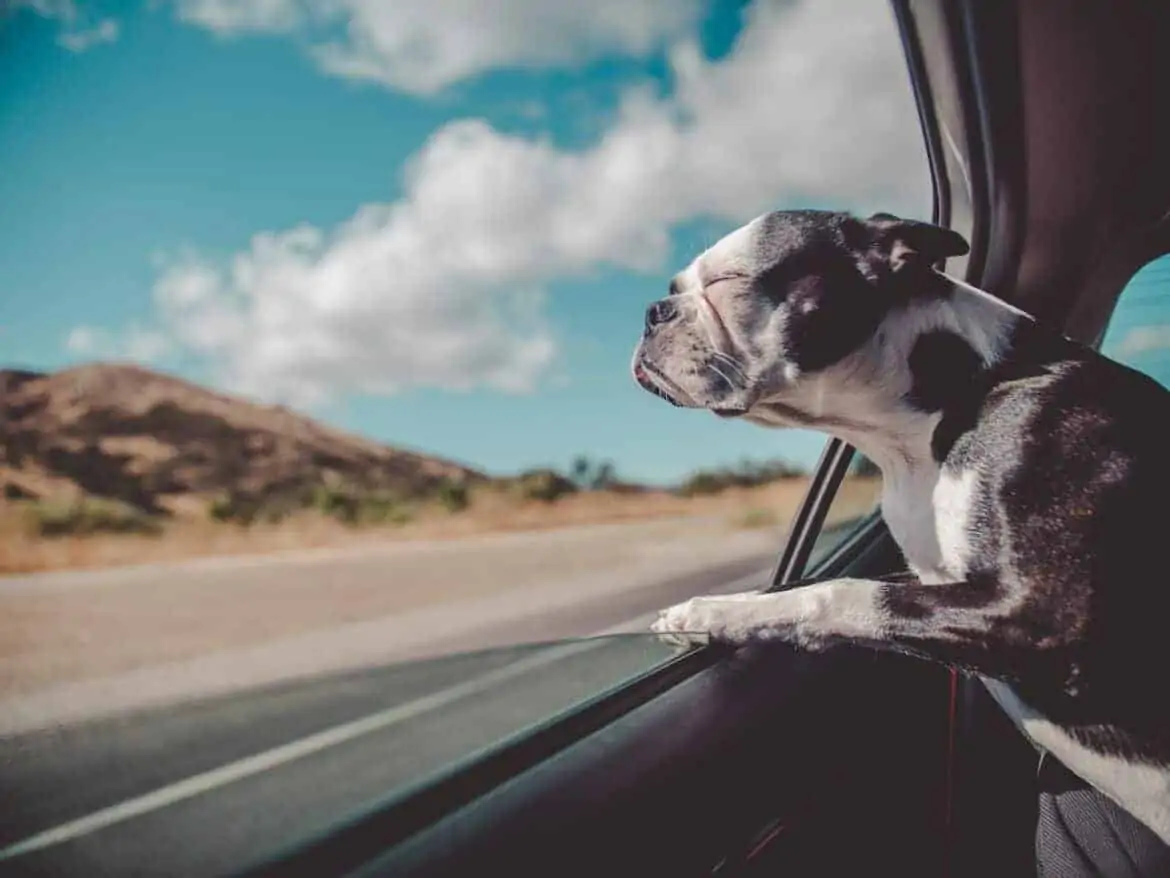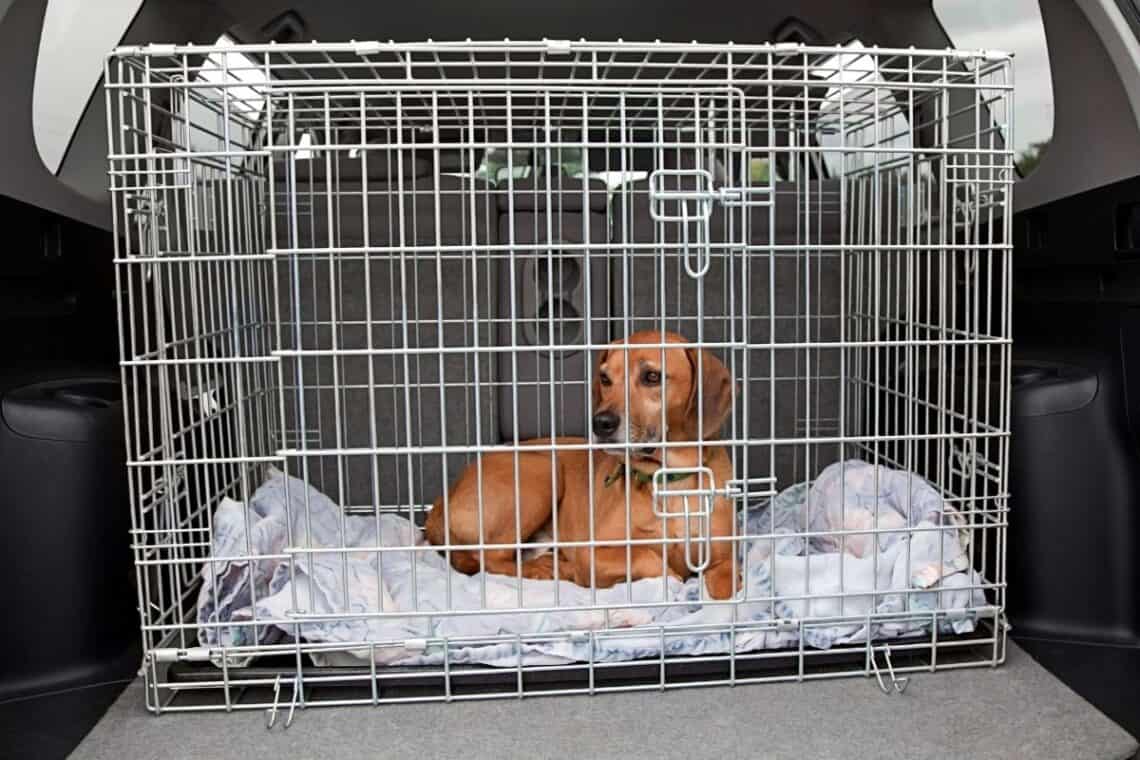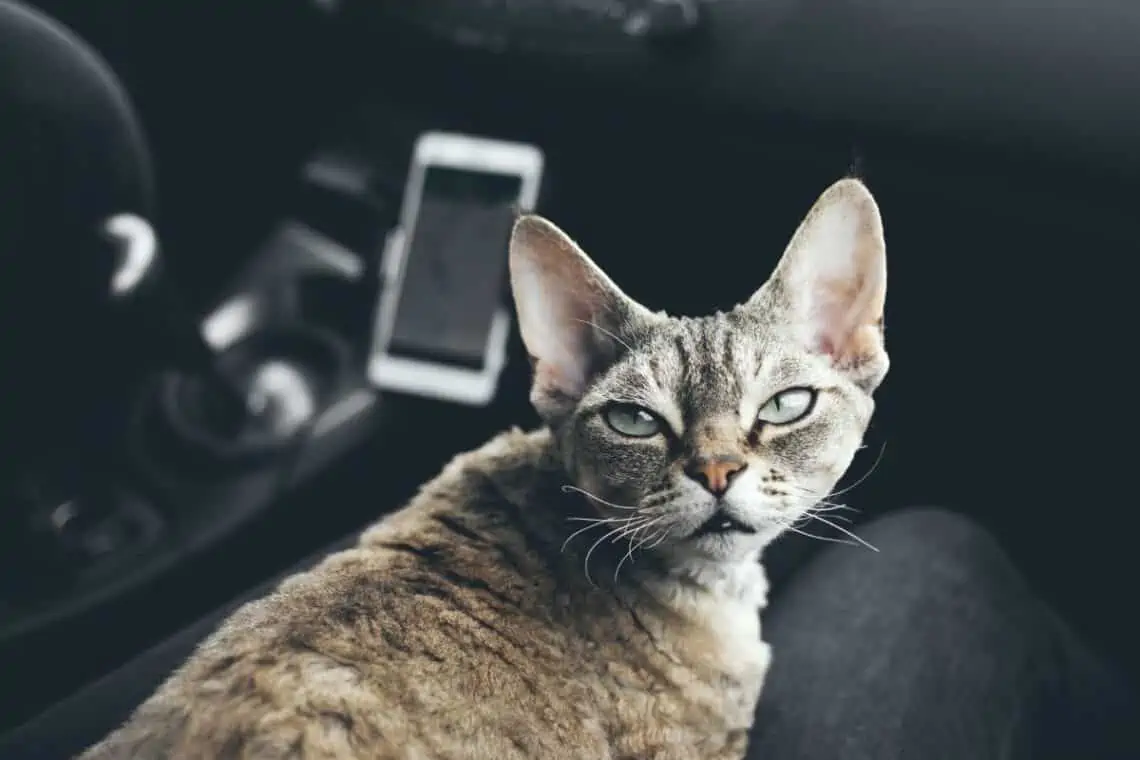For many people, traveling is one of the greatest joys in life. A time to forget our daily responsibilities and hit the reset button. While solo travel has benefits, most people go on trips with friends and loved ones to reconnect and make lifelong memories.
If you’re like seventy percent of US households, you likely have a furry family member that completes your family. Taking pets on vacations via plane can be expensive and stressful, but taking your pet on a road trip is feasible, and many pet owners (who am I kidding, we’re pet parents!) do it. Going on a road trip with your pet can be a fun experience for the whole family.
Traveling with your pet can be a great way to bond and make memories that will last a lifetime. But if your pet is not used to being in the car, it can be a stressful experience for them so, it’s important to keep your furry friend calm and comfortable while on the road or on a long trip. After all, no one wants a stressed-out pet!

Whether you’re planning a road trip with your pet for the first time or weren’t prepared for the stress of traveling in the car on your last road trip and need tips, keep reading for ways to keep your cat or dog calm in the car, not to mention happy and safe.
Crates
When hopping in the car for a road trip with your children, you ensure everyone is safely buckled into their seat belt, car seat, or booster. When it comes to fear free pet travel, a crate is the best way to bring feline and canine companions on car trips and can provide your pet with physical, emotional and safe restraint.
Before heading out on your next road trip, it’s important to gradually acclimate your pet to the car by taking short trips and building up their tolerance. The back seat is the best and safest spot for your pet’s crate.
Try several test short car rides and a long car ride or two around town before you go so you know how your pet will react and you can properly prepare – especially if you plan on going on a long road trip. Don’t let their car ride behavior be a surprise to you and make for a bad experience!

Your dog may already look to their crate at home as a safe space, so a crate in your car works the same way. Be sure to pack a chew toy, favorite blanket and favorite toys.
On the other hand, cats typically don’t like being constricted to a crate or to be in cars in general. It’s always a good idea to get them used to laying in a crate at home for a few weeks before your trip and reinforce positive association with treats and love.
It’s important to associate good things and positive experiences with the crate or carrier as it can be very useful in many different stressful situations.
Whatever you do, do not allow a nervous cat (or dog!) to roam free in your car while you are driving. This could prove unsafe for everyone in the car if they freak out or interfere with the driver.
*TIP* Especially anxious pets may benefit from placing a blanket or towel over the crate. Our cat was freaked out by the cars quickly zooming by on the freeway and it makes sense they don’t understand they won’t be hit by them! By removing the excess visual stimulation, you can create a calmer environment.
Hugging Vests
If you’re a parent, you likely swaddled your baby for the first few months of its life for its ability to keep your newborn calm and sleeping peacefully.
Comforting vests work in the same way and are one of the best-selling, non-mood-altering options for reducing dog car anxiety and are worth the investment.
You may have difficulty getting your feline friend into a vest, but most dogs are happy to oblige. Don’t give up on your kitty though as a cat anxiety sweater really does do wonders and is worth the effort to dress your fur baby.

They are also excellent for dogs and cats that display anxious behavior at home. We have a cat that is instantly calmed down and much more mellow when wearing her sweater so if you have an anxious dog or cat, and don’t want to use medications, it’s certainly worth a try!
Aromatherapy
As adults, when we’re struggling with the stress of work and family responsibilities or even difficulty falling asleep, many of us turn to aromatherapy. Aromatherapy has been used for thousands of years and has been highly effective in reducing stress and travel anxiety and invoking a sense of calm. The same can apply to your pets!
Lavender, which is known for its natural sedative properties, may help soothe an anxious cat or dog. Copaiba, frankincense and helichrysum are also considered safe for cats and dogs, but it’s important to always check with a veterinarian before using essential oils on your pets.
It’s been said that adding a drop or two of lavender or frankincense oil onto a bandana and tying it loosely around their dog’s neck is effective. Some dog owners feel more comfortable going this route rather than using oral sedatives.
You could also use a portable essential oil diffuser or try using a cute flower car vent clip to release calming scents in the car. Why not share the benefits with everyone in the car?
CBD Oil
You may already be using CBD oil for your own anxiety and stress, so it makes sense that it will work for your furry family too. CBD oil can effectively treat your dog’s anxiety and calm cats, though their dosages differ.
Not all pets tolerate the oil on its own; thankfully, pet CBD companies make gummies, treats, and other options that may better suit your pet.
If you have never used CBD oil with your pets, consulting your veterinarian about choosing brands and dosing guidelines is essential.
Plenty of Pit Stops
This one seems like a no brainer, but when traveling with your dog or cat, ensure you plan to take plenty of potty breaks along the way. No one likes to feel a sense of urgency going down long stretches of highway.

This is also a great time to let your pet get some much needed exercise, stretching their legs and allowing them to release any pent up anxiety or nervous energy they may have built up during the car ride.
Is everything up to date?
It’s also important to make sure your pet has their ID tags and microchip information up-to-date before any trip, just in case they become separated from you during your travels. Keep a recent photo of them in your phone, just in case you need it for identification purposes.
Also be sure your pet is current on all their vaccinations and preventive medications before heading out on the road. A vet visit for a routine checkup can also help identify any potential health issues that may pop up during travel and be treated before they become a problem.
Do pets experience motion sickness?
It’s a common question that veterinarians get asked, and unfortunately, there’s no easy answer. Just like humans, every animal is different and will react differently to being in a moving vehicle.
The cause of motion sickness is not entirely understood, but it is thought to be related to the inner ear, which helps to regulate balance. When the inner ear is thrown off balance by the motion of a car travel, it can send conflicting signals to the brain, leading to nausea.

Some pets are more prone to car sickness than others. Some animals may start to pant or pace back and forth, while others may become visibly anxious or try to hide. These are all signs of anxiety. I have one cat that does all of the above and another who just sits quietly in one spot.
However, the most common sign of motion sickness in animals is vomiting. If your pet starts to vomit while in the car, it’s important to pull over as soon as possible and let them out for some fresh air. Take the opportunity for a potty break and to stretch everyone’s legs.
If the vomiting persists, or if you are worried about your pet, you should seek veterinary treatment right away.
There are also anti-motion sickness medications available from your vet, but these should never be used without consultation first.
When it’s just too much for your pet
We thought it would be a great idea to take our cats with us on our last week long vacation and we quickly learned it was actually better for them (and us!) that they stayed home. One of our cats experiences extreme anxiety in the car so that 2.5 hour ride was very stressful for everyone.
What we didn’t consider was the final destination environment once we arrived. Even though pets were allowed at the hotel we stayed at, we were paranoid they would bolt out the door any time we opened it. Being in a foreign place and being frightened by cars, strange people and new smells – we might not see them again if that happened!

And while we requested no cleaning service, we were in constant fear that an employee might enter the room anywhere for whatever reason and let them out unknowingly. This really limited how much time we spent away from our room which in turn put a damper on our vacation.
In some cases, the best solution may be to leave your pet at home or find a pet sitter to watch them while you travel. Some pets just can’t handle car rides and may become too stressed or anxious to enjoy their time away from home.
It’s always important to consider the well-being and comfort of our furry friends, as a road trip should be enjoyable for everyone involved. By taking these steps and properly preparing for your road trip with your pet, you can help ensure a calm and enjoyable journey for both of you. Happy travels!